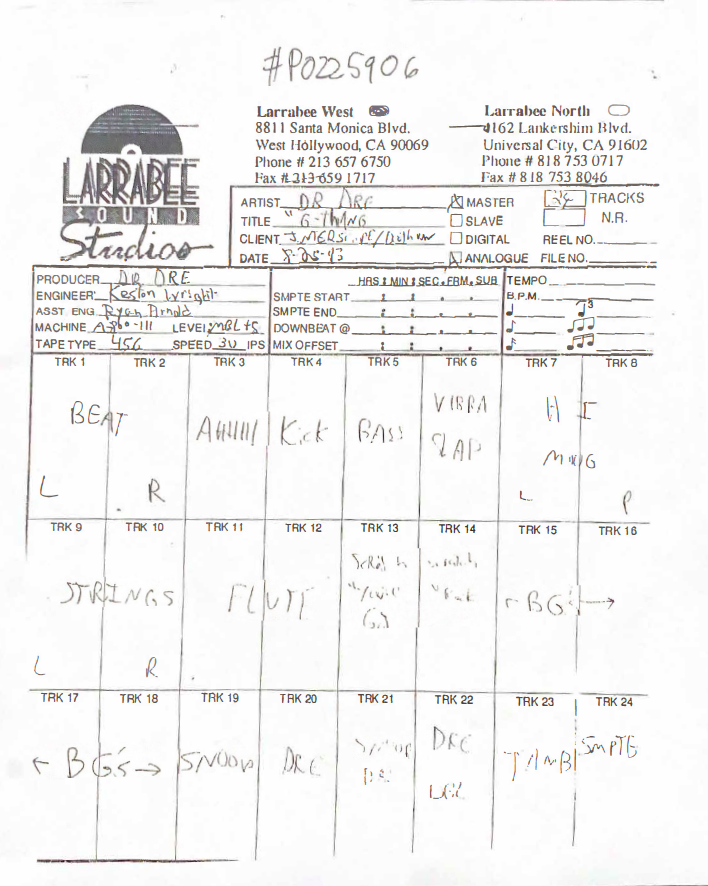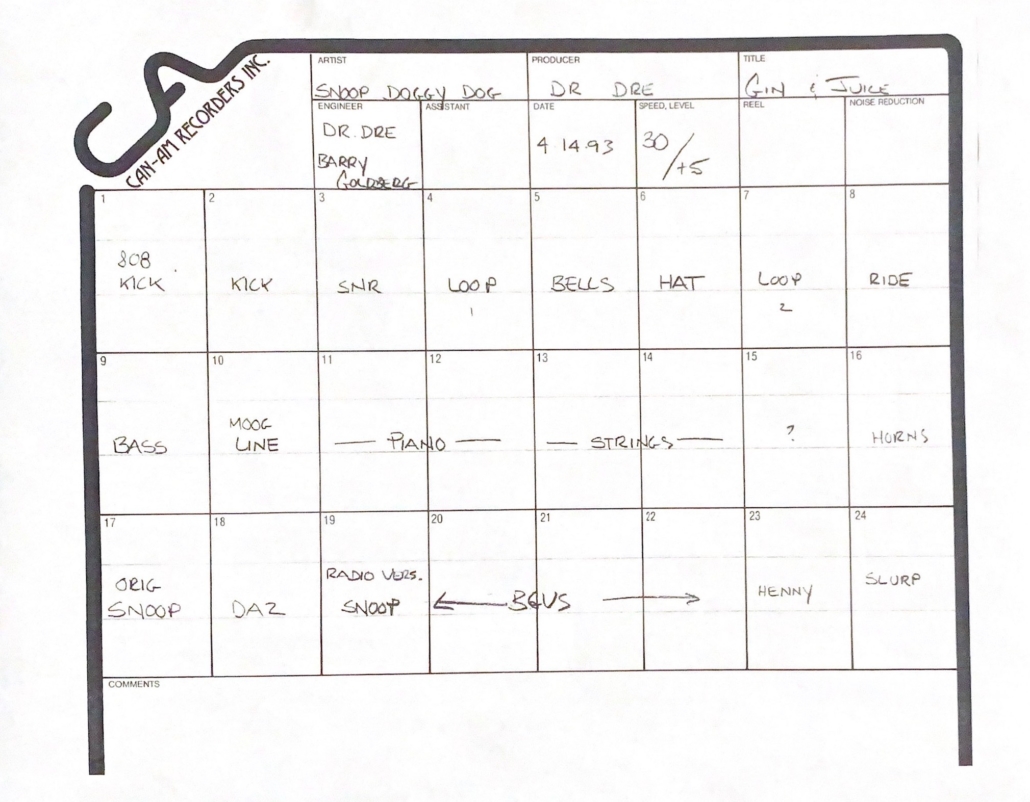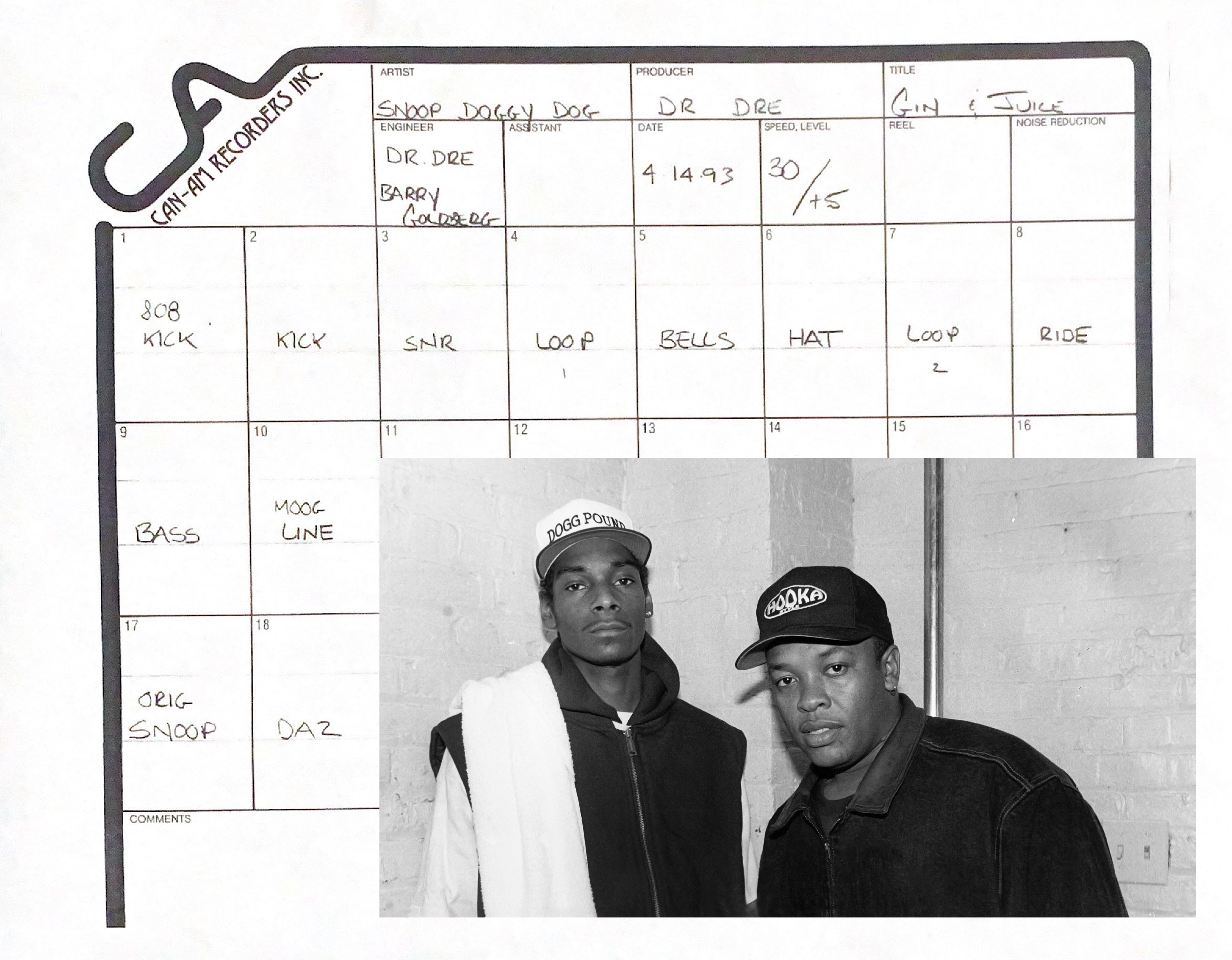Earlier this year, we teamed up with the pioneering music label, Death Row Records, to release a limited-edition Blackwing x Death Row Records pencil set and Slate notebook (sold exclusively through the Death Row website) celebrating their 30th anniversary. In celebration, they created an interactive “Death Row Experience” chronicling its rise, illustrious roster of artists, and lasting cultural impact. As a part of this, Death Row Records gave us a glimpse into their archives and shared some fascinating relics. Among those discoveries were track sheets for Dr. Dre’s “Nuthin’ but a G-Thang” and Snoop Doggy Dog’s “Gin and Juice” that give a behind-the-scenes look at some of the label’s most notable songs.
Los Angeles in 1991 saw the landscape of music shift in a new direction with the founding of Death Row Records. While the origins of rap and hip-hop are often attributed to the East Coast, the late 80s and early 90s ushered in a renaissance in the West and the establishment of a new center for hip-hop culture in Los Angeles, California.
In 1992, Dr. Dre, a co-founder of Death Row Records, released one of the most seminal albums of all time. His solo debut titled, “The Chronic,” served as the first album published under the Death Row Records label. “The Chronic” went on to become a certified triple platinum record and climbed the Billboard music charts. The album’s first single, “Nuthin’ but a G-Thang,” rose to number one on the Billboard Rap and R&B charts and number two on the “Hot 100” during its run.

Most of Death Row’s famous recordings were produced at their home studio, Can-Am Recorders in Los Angeles. The Can-Am studios were equipped with Solid State Logic consoles and the original recordings were made on Studer 24 track analog machines which many of the artists and producers preferred. In addition, “track sheets” were used as a method of recordkeeping for every vocal, instrument, and personnel involved in the production.
Each track sheet gives a timeline of elements including the keyboards, drum beats, vocal sessions, and miscellaneous items that comprised the individual parts of the song. Often if the recording studio at Can-Am was already booked, artists recorded at other studios such as Larrabee Sound in nearby Hollywood, CA. Beyond the commercial and critical success, “The Chronic” also signaled the rise to stardom for fellow Death Row artist, Snoop Doggy Dogg who was featured prominently on the album.

Less than a year after the release of “The Chronic,” Dr. Dre produced the second record under the Death Row label, Snoop Doggy Dog’s “Doggystyle.” Upon its release, critics and admirers celebrated the album for Snoop’s distinct lyrical style and rap flow. The album debuted at number one on the Billboard Top 200 music chart and went on to become certified quadruple platinum. With similar production styles to “The Chronic,” both albums helped foster the beginnings of the “G-funk” era of rap music. “Gin and Juice,” the second single off of “Doggystyle” earned Snoop Doggy Dogg a Grammy nomination for “Best Solo Rap Performance” in 1995.
Death Row Records remains one of the most notable and influential music entities of all time. From Dr. Dre to Snoop Doggy Dog to Tupac Shakur, Death Row Records firmly established West Coast hip-hop as a formidable force that defined art and culture during the 1990s. 30 years later, Death Row Records continues the legacy of these legendary artists and the significant and unique impact that they made in music history.
Shop the Blackwing x Death Row Records Collection – Sold exclusively through the Death Row Records website


